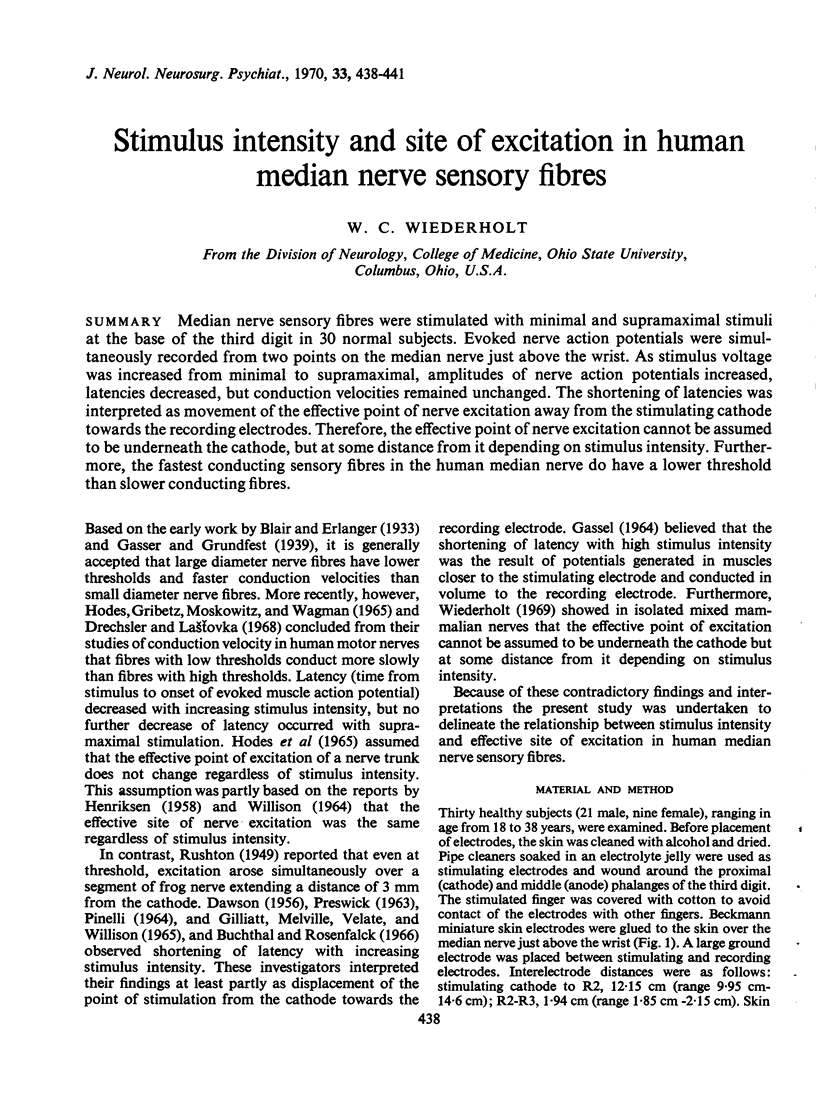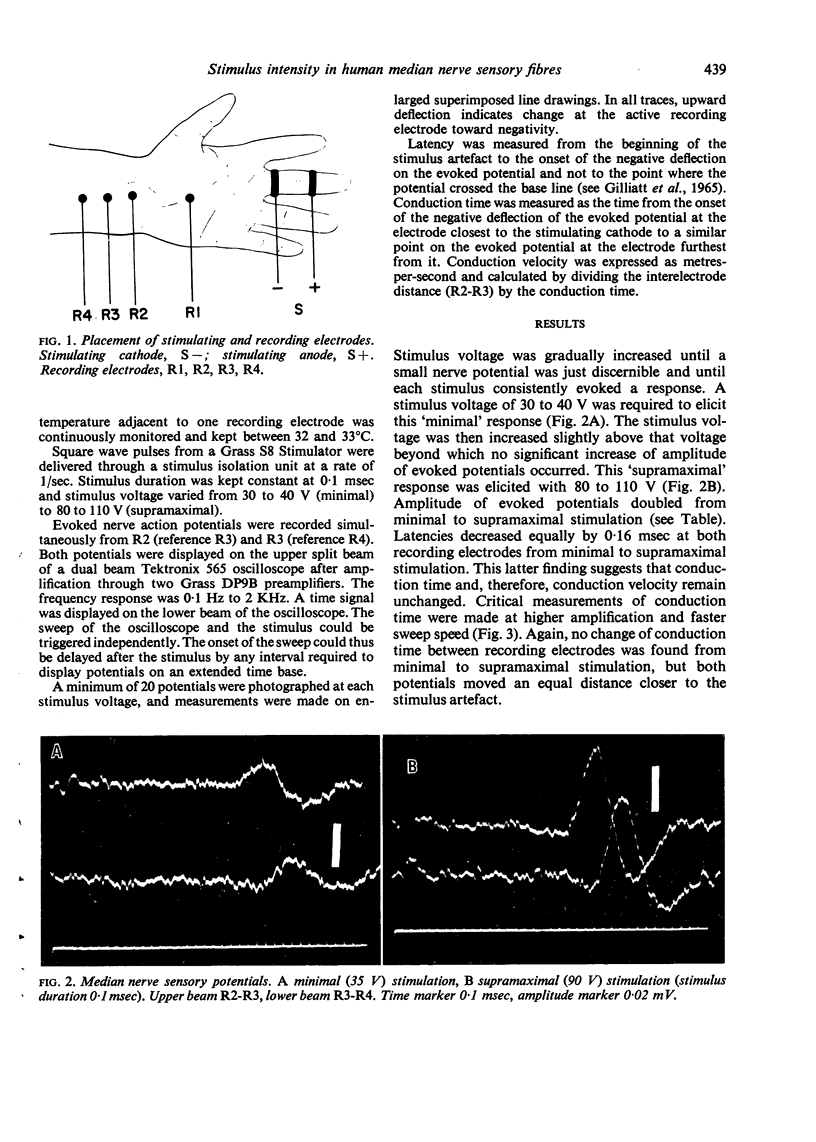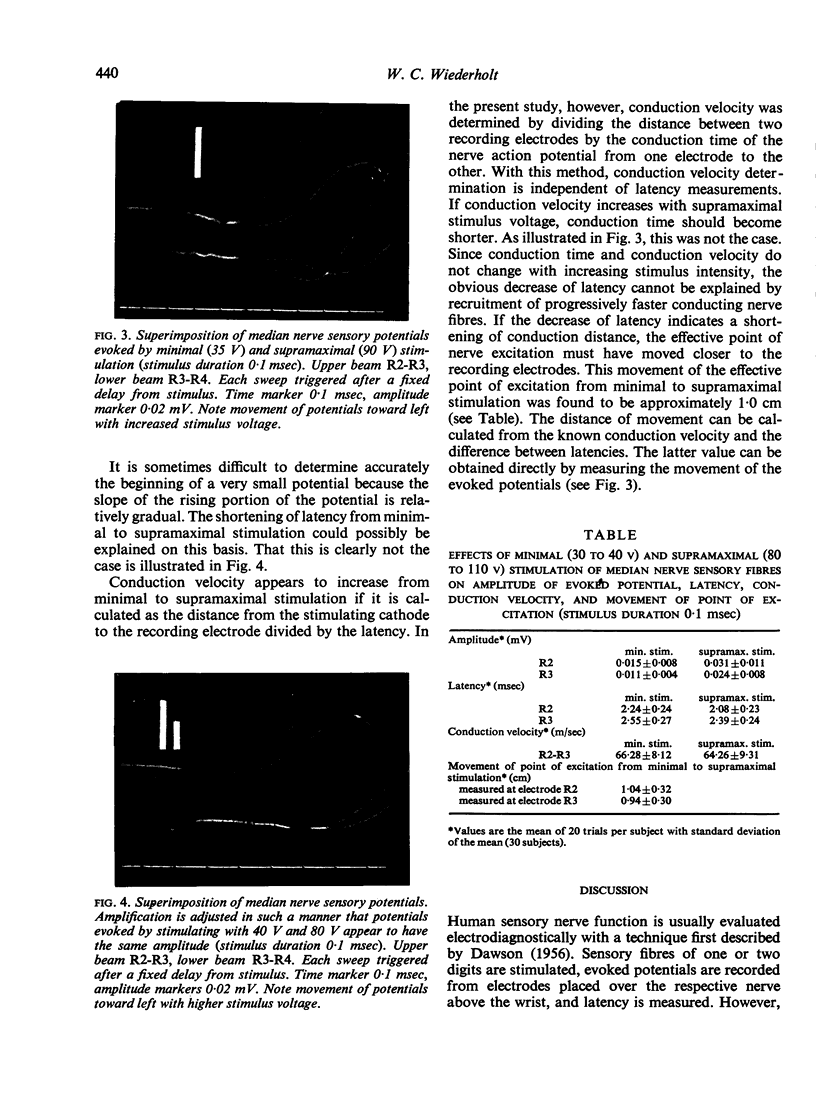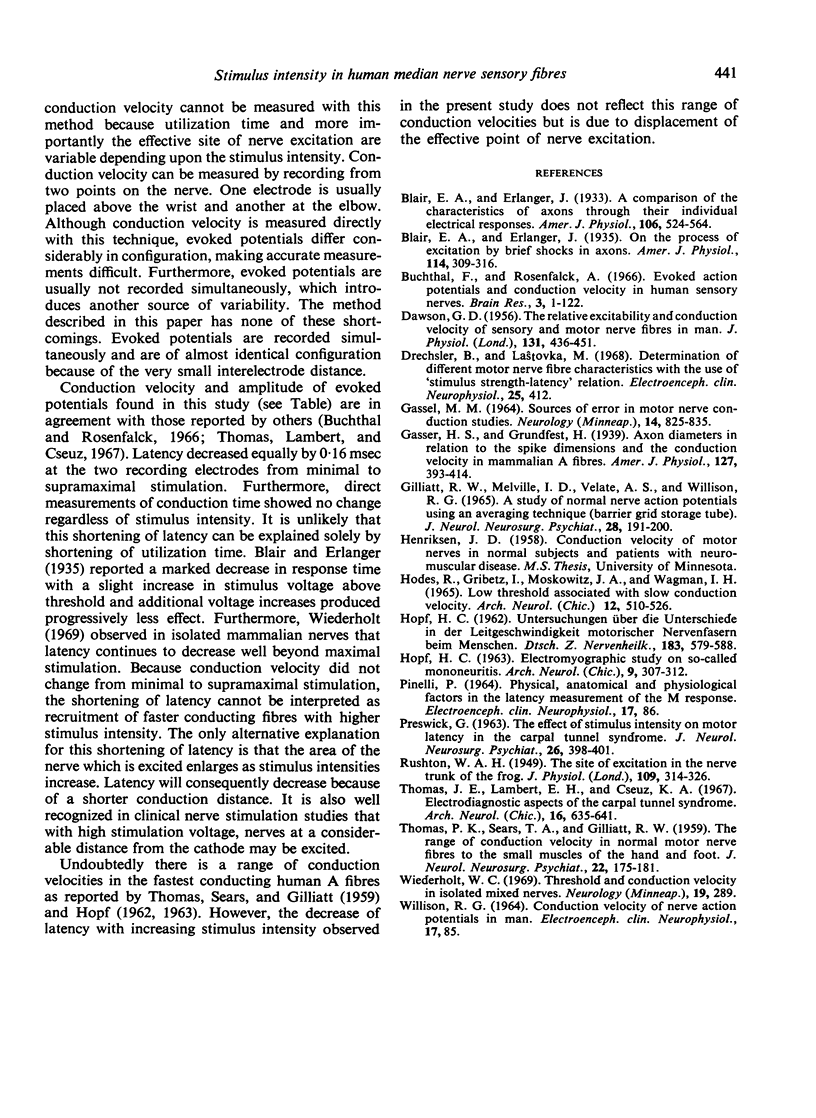Abstract
Median nerve sensory fibres were stimulated with minimal and supramaximal stimuli at the base of the third digit in 30 normal subjects. Evoked nerve action potentials were simultaneously recorded from two points on the median nerve just above the wrist. As stimulus voltage was increased from minimal to supramaximal, amplitudes of nerve action potentials increased, latencies decreased, but conduction velocities remained unchanged. The shortening of latencies was interpreted as movement of the effective point of nerve excitation away from the stimulating cathode towards the recording electrodes. Therefore, the effective point of nerve excitation cannot be assumed to be underneath the cathode, but at some distance from it depending on stimulus intensity. Furthermore, the fastest conducting sensory fibres in the human median nerve do have a lower threshold than slower conducting fibres.
Full text
PDF



Images in this article
Selected References
These references are in PubMed. This may not be the complete list of references from this article.
- DAWSON G. D. The relative excitability and conduction velocity of sensory and motor nerve fibres in man. J Physiol. 1956 Feb 28;131(2):436–451. doi: 10.1113/jphysiol.1956.sp005473. [DOI] [PMC free article] [PubMed] [Google Scholar]
- Drechsler B., Lastovka M. Determination of different motor nerve fibre characteristics with the use of "stimulus strength-latency" relation. Electroencephalogr Clin Neurophysiol. 1968 Oct;25(4):412–412. [PubMed] [Google Scholar]
- GASSEL M. M. SOURCES OF ERROR IN MOTOR NERVE CONDUCTION STUDIES. Neurology. 1964 Sep;14:825–835. doi: 10.1212/wnl.14.9.825. [DOI] [PubMed] [Google Scholar]
- GILLIATT R. W., MELVILLE I. D., VELATE A. S., WILLISON R. G. A STUDY OF NORMAL NERVE ACTION POTENTIALS USING AN AVERAGING TECHNIQUE (BARRIER GRID STORAGE TUBE). J Neurol Neurosurg Psychiatry. 1965 Jun;28:191–200. doi: 10.1136/jnnp.28.3.191. [DOI] [PMC free article] [PubMed] [Google Scholar]
- HODES R., GRIBETZ I., MOSKOWITZ J. A., WAGMAN I. H. LOW THRESHOLD ASSOCIATED WITH SLOW CONDUCTION VELOCITY; STUDIES OF HUMAN MOTOR AXONS. Arch Neurol. 1965 May;12:510–526. doi: 10.1001/archneur.1965.00460290066008. [DOI] [PubMed] [Google Scholar]
- HOPF H. C. ELECTROMYOGRAPHIC STUDY ON SO-CALLED MONONEURITIS. Arch Neurol. 1963 Sep;9:307–312. doi: 10.1001/archneur.1963.00460090113014. [DOI] [PubMed] [Google Scholar]
- PRESWICK G. THE EFFECT OF STIMULUS INTENSITY ON MOTOR LATENCY IN THE CARPAL TUNNEL SYNDROME. J Neurol Neurosurg Psychiatry. 1963 Oct;26:398–401. doi: 10.1136/jnnp.26.5.398. [DOI] [PMC free article] [PubMed] [Google Scholar]
- RUSHTON W. A. H. The site of excitation in the nerve trunk of the frog. J Physiol. 1949 Sep;109(3-4):314–326. doi: 10.1113/jphysiol.1949.sp004395. [DOI] [PMC free article] [PubMed] [Google Scholar]
- THOMAS P. K., SEARS T. A., GILLIATT R. W. The range of conduction velocity in normal motor nerve fibers to the small muscles of the hand and foot. J Neurol Neurosurg Psychiatry. 1959 Aug;22:175–181. doi: 10.1136/jnnp.22.3.175. [DOI] [PMC free article] [PubMed] [Google Scholar]
- Thomas J. E., Lambert E. H., Cseuz K. A. Electrodiagnostic aspects of the carpal tunnel syndrome. Arch Neurol. 1967 Jun;16(6):635–641. doi: 10.1001/archneur.1967.00470240073010. [DOI] [PubMed] [Google Scholar]





